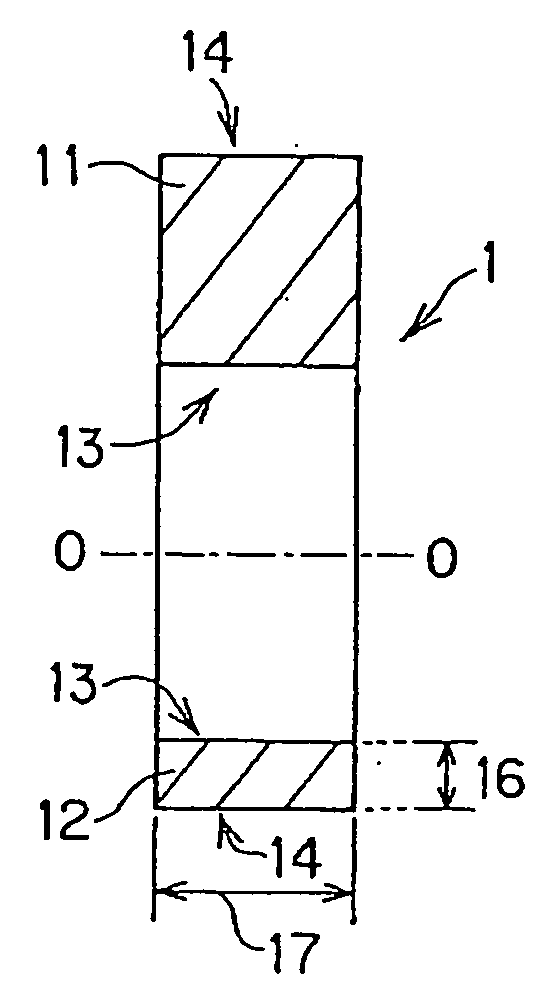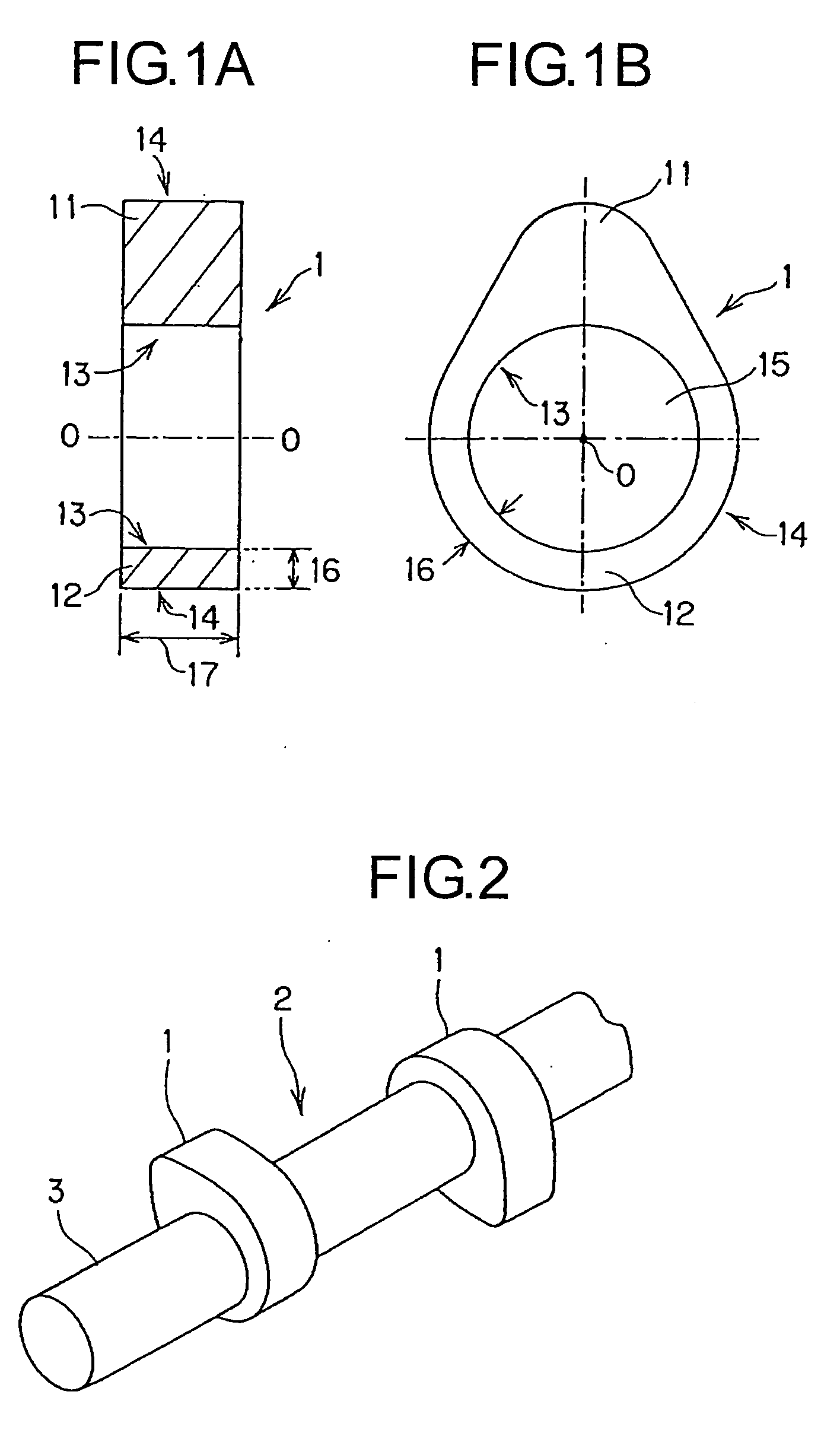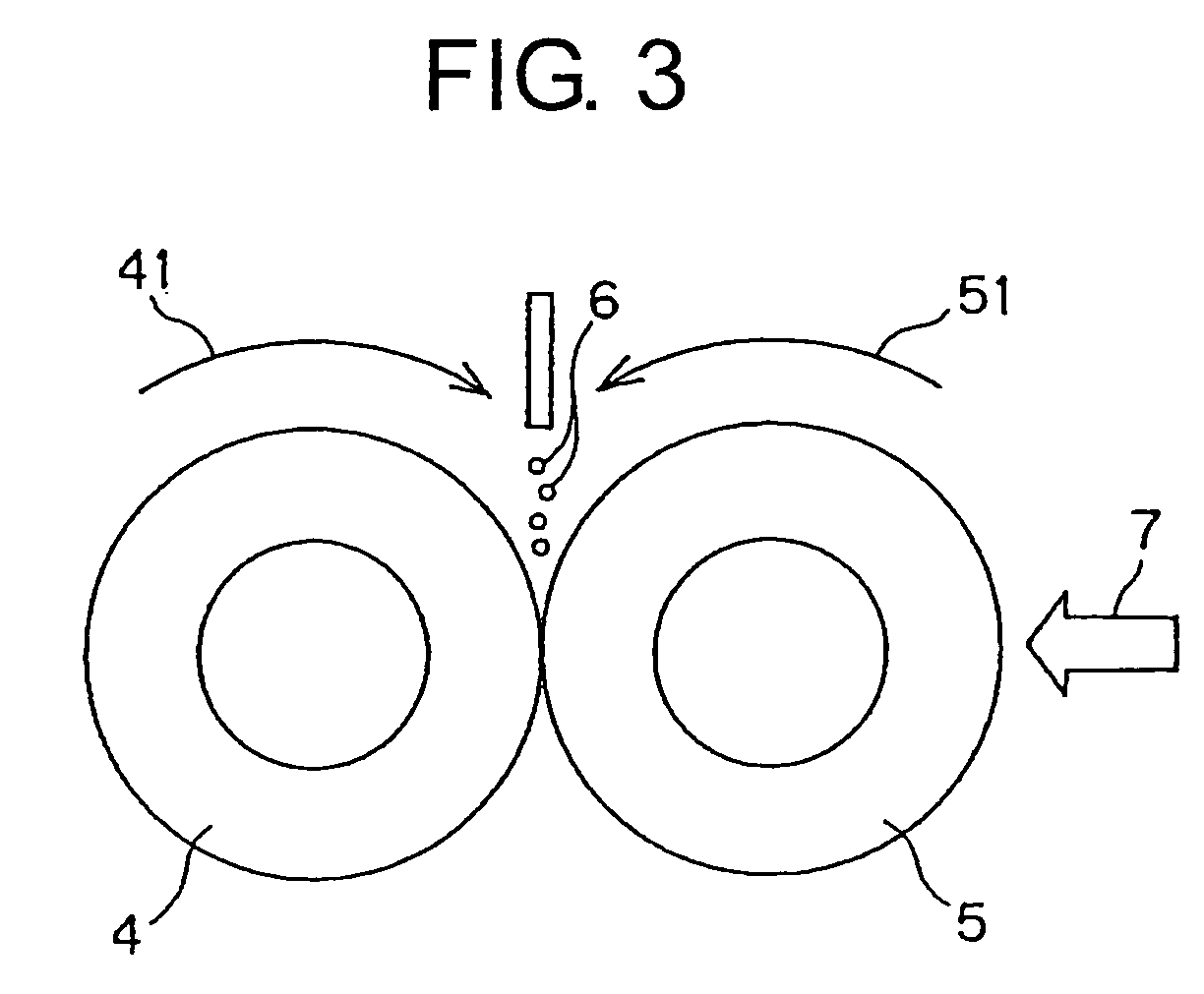Method of Manufacturing Cam Shaft, Cam Shaft, and Cam Lobe Material Used in the Same
- Summary
- Abstract
- Description
- Claims
- Application Information
AI Technical Summary
Benefits of technology
Problems solved by technology
Method used
Image
Examples
example 1
[0087]After secondary sintering, iron-based alloy powders consisting essentially of 0.8% by mass of C, 3.5% by mass of Ni, 0.3% by mass of Mo, and the balance Fe and incidental impurities were prepared, zinc stearate was added as a lubricant to the iron-based alloy powders, and they were mixed together. Next, the mixture was compression molded (primary molding) to the shape of the cam lobe 1 at a compressive load of 5 to 7 tons / cm2 and then temporarily sintered (primary sintering) at 600 to 900° C. in a vacuum sintering furnace. Furthermore, to the primary sintered body, compression molding (secondary molding) was performed at a compressive load of 7 to 10 tons / cm2 and regular sintering (secondary sintering) was then performed at 1100 to 1200° C. in the vacuum sintering furnace. Subsequently, this sintered body was subjected to quenching and tempering treatment (heating at 900° C. for 100 minutes, then oil quenching, further heating at 150° C. for 60 minutes, then air cooling), wher...
examples 2 to 5
[0089]Sintered bodies were fabricated in the same manner as with Example 1 from iron-based alloy powders to obtain the chemical compositions shown in Table 1 after secondary sintering, heat treatment similar to that of Example 1 was performed, and the cam lobe materials 1 of Examples 2 to 5 were obtained.
[0090]For each of the examples with a numeral “−1,” Examples 2-1, 3-1, 4-1 and 5-1, only the inner circumferential surface 13 of a cam lobe material was subjected to treatment for residual compressive stress addition treatment in the same manner as with Example 1-1, whereby the cam lobe material 1 was fabricated. Also, for each of the examples with a numeral “−2,” Examples 1-2, 2-2, 3-2, 4-2 and 5-2, both of the inner circumferential surface 13 and the outer peripheral surface 14 of a cam lobe material was subjected to treatment for residual compressive stress addition treatment, whereby the cam lobe material 1 was fabricated.
PUM
| Property | Measurement | Unit |
|---|---|---|
| Compressive stress | aaaaa | aaaaa |
| Degree of freedom | aaaaa | aaaaa |
| Compressive stress | aaaaa | aaaaa |
Abstract
Description
Claims
Application Information
 Login to View More
Login to View More - R&D
- Intellectual Property
- Life Sciences
- Materials
- Tech Scout
- Unparalleled Data Quality
- Higher Quality Content
- 60% Fewer Hallucinations
Browse by: Latest US Patents, China's latest patents, Technical Efficacy Thesaurus, Application Domain, Technology Topic, Popular Technical Reports.
© 2025 PatSnap. All rights reserved.Legal|Privacy policy|Modern Slavery Act Transparency Statement|Sitemap|About US| Contact US: help@patsnap.com



